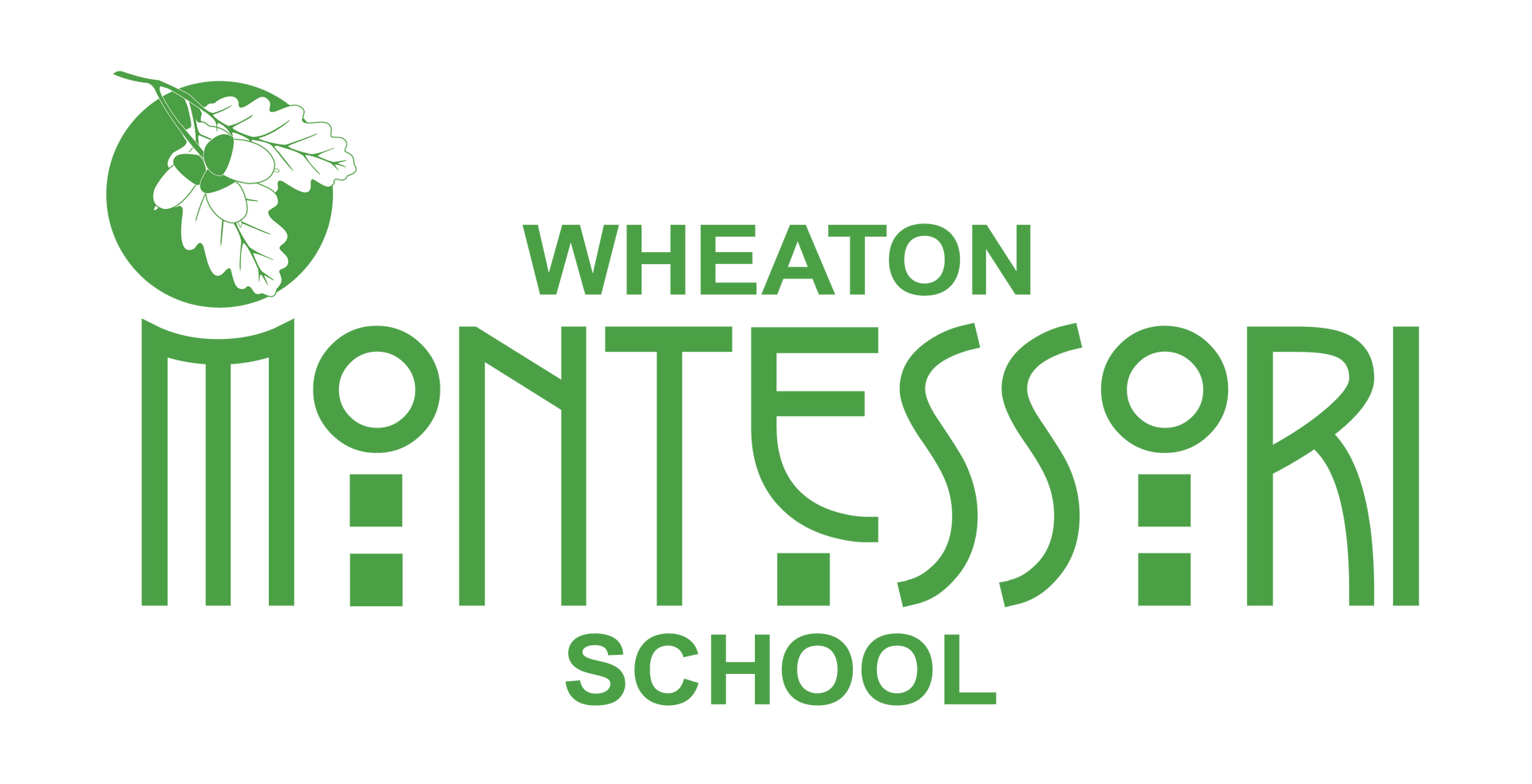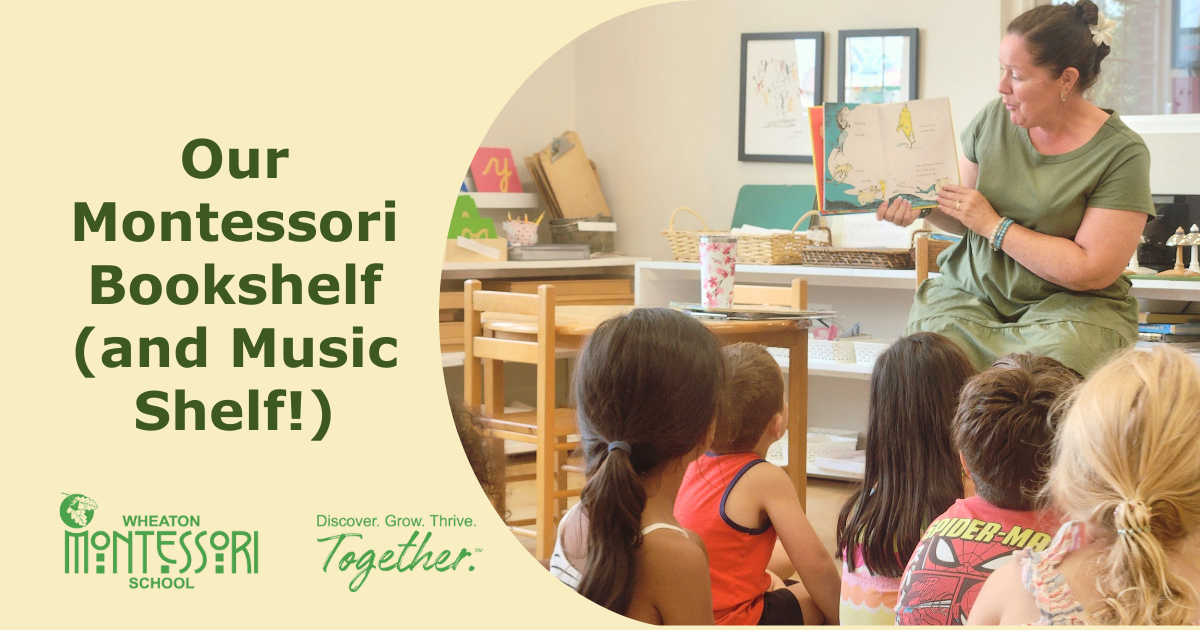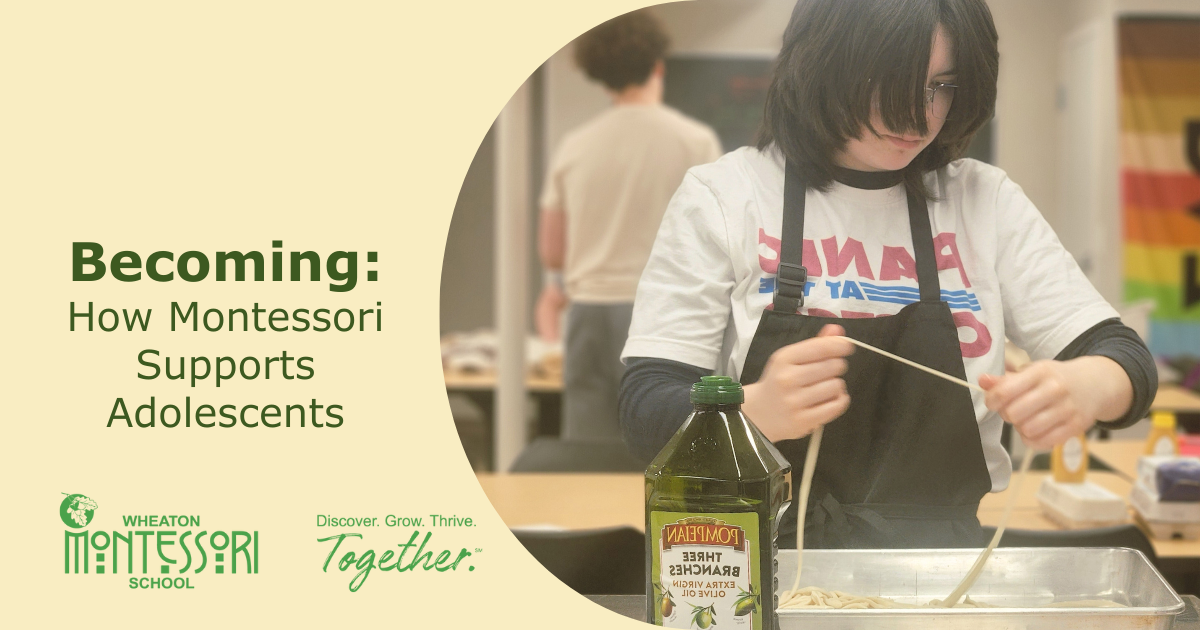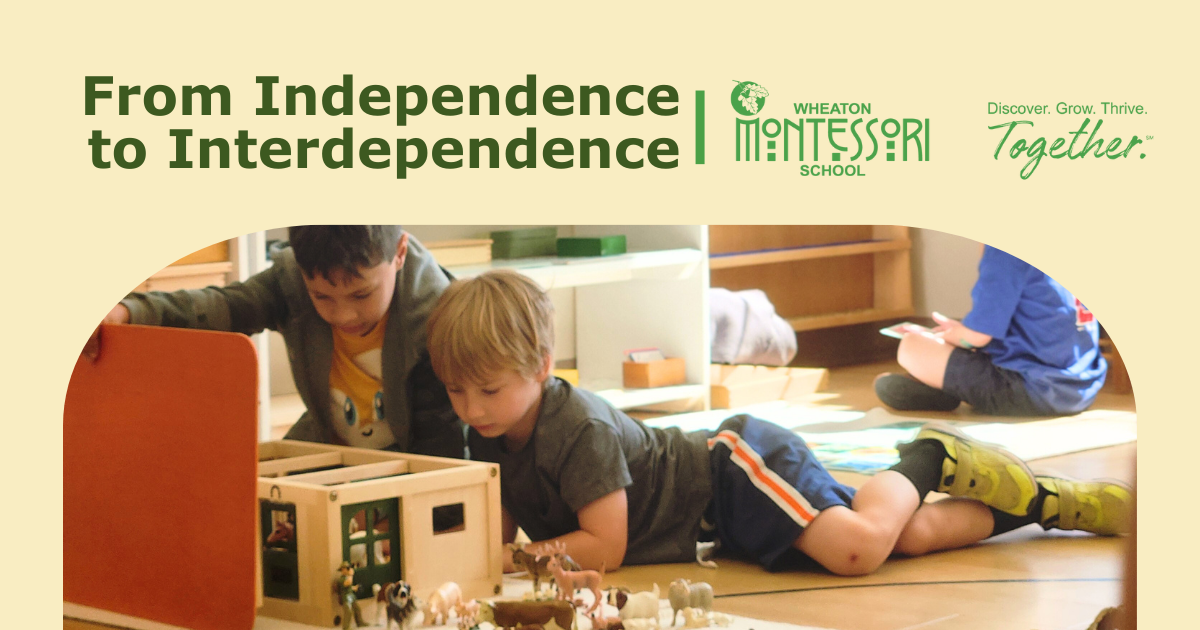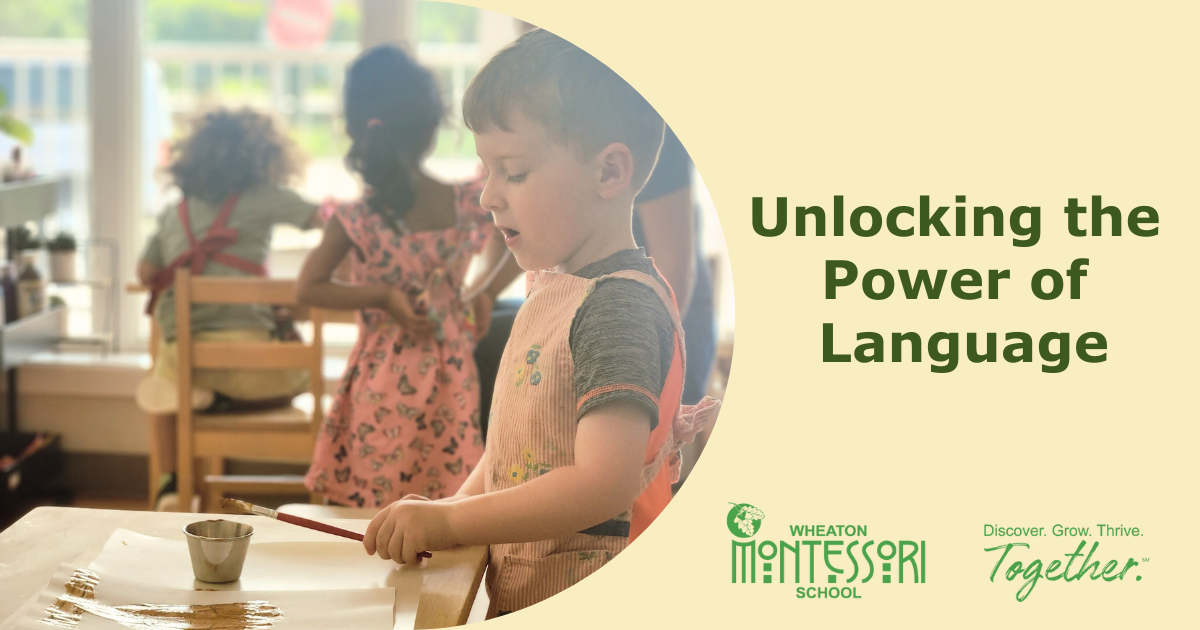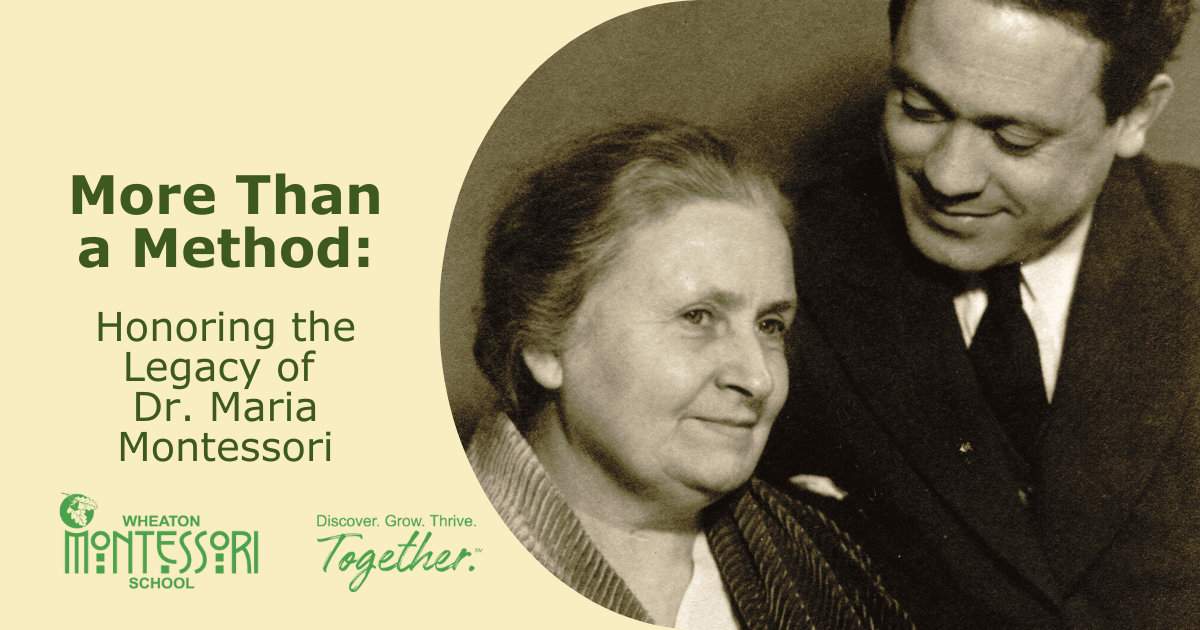Blog
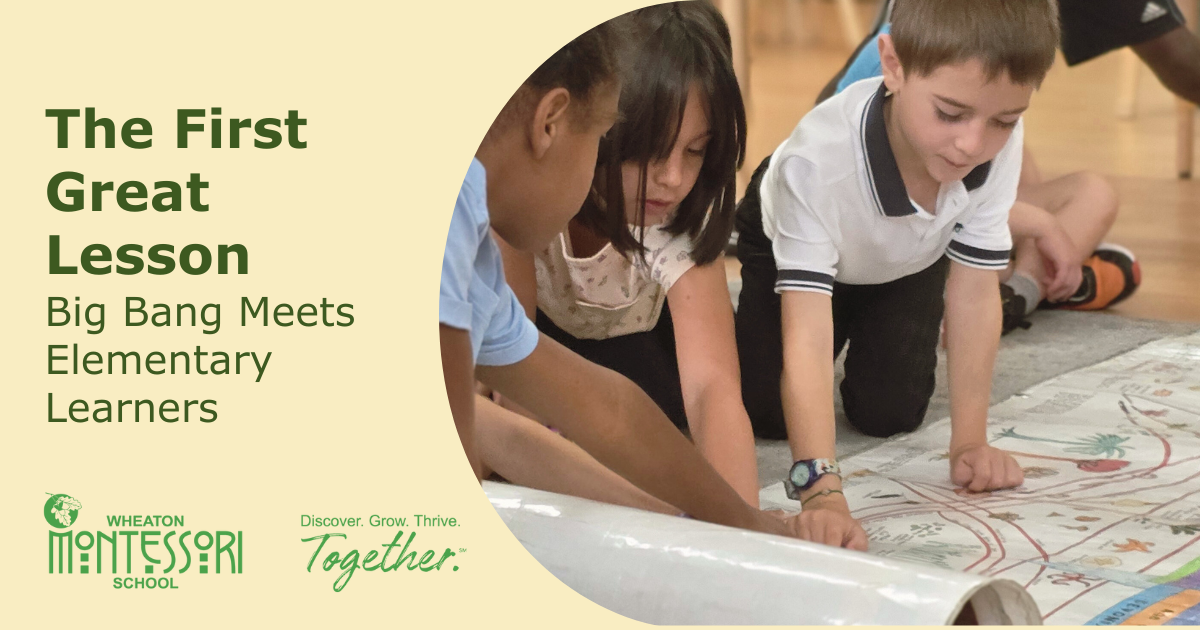
Where it All Began: The Story of the Universe In the first Great Lesson, the Story of the Universe, students were introduced to the concept that as the universe formed, every particle was given a set of laws to follow. As each speck of matter set about following its laws, they gathered together into groups and settled down into one of three states: the solid, the liquid, and the gaseous. The Earth gradually cooled into a somewhat spherical form with a surface marked by lots of ridges and hollows. The ridges are the mountains, and the rains filled in the hollows to make the seas. The Coming of Life: A New Beginning The Story of the Coming of Life picks up here, with the sun looking down at the Earth and noticing some trouble going on. As the rains fell, they mixed with gases from the air, which introduced a lot of salt into the seawater. Additionally, the rocks were being battered by the sea and breaking off, adding more minerals and salts to the water. Dr. Montessori anthropomorphizes the sun, the air, the water, and the mountains very entertainingly as they each blame one another for all the trouble. The Timeline of Life: Evolution Unfolds Then, an answer appears in the form of a little “blob of jelly” which arrives in the sea. This bit of jelly is given a special set of directives that none of the others have: the ability to eat, grow, and make more of itself. Gradually, the blob of jelly divides into multitudes of creatures who set about eating the minerals from the sea and developing into increasingly complex organisms. Some of these animals ate one another, while others used the minerals in the sea and the light from the sun to make their own food. Our Timeline of Life accompanies the story. Dr. Montessori purposely does not try to show every type of animal that has ever existed on this timeline. She selects just a few examples to show the progression of life from the single-celled organisms and trilobites to the first animal with an internal skeleton (the fish) to the first animal to try out life on the land (amphibians – also the first voice!) to the reptiles, who worked out a way to live independently of the water by cultivating scaly dry skins and eggs with shells. The children hear about how the reptiles grew in size and in number to become the masters of the earth, while some enterprising small creatures learned to survive on the fringes, raiding the reptiles’ nests and developing warm body coverings to survive in the colder temperatures that the reptiles couldn’t tolerate. These birds and mammals also learned to care for their eggs and babies. These adaptations helped them to thrive while those giant reptiles…well, we don’t have them around anymore, do we? Wonder, Curiosity, and Ongoing Discovery The childr en are fascinated by this story, which sets up for them the basic laws that govern all living things, providing a framework for the biology work they will undertake in the elementary classrooms at Wheaton Montessori School. It also serves as an epic tale of how the earth was prepared for the coming of one very special animal that was unlike any other…us! From here, the students will pick up on any number of details to investigate further. Already, I’ve had first graders studying the fossils of trilobites and crinoids (sea lilies) and others embarking on dinosaur research. The key concepts that were introduced in this story will be refined throughout their time in the Elementary community by lessons on the parts of the plants and their functions, the classification of plants and animals, and the systems of an animal’s body. And these ideas are further integrated as they apply them in their research projects about plants, animals, fossils, rocks, minerals, and limestone, oceans, rivers, and mountain.
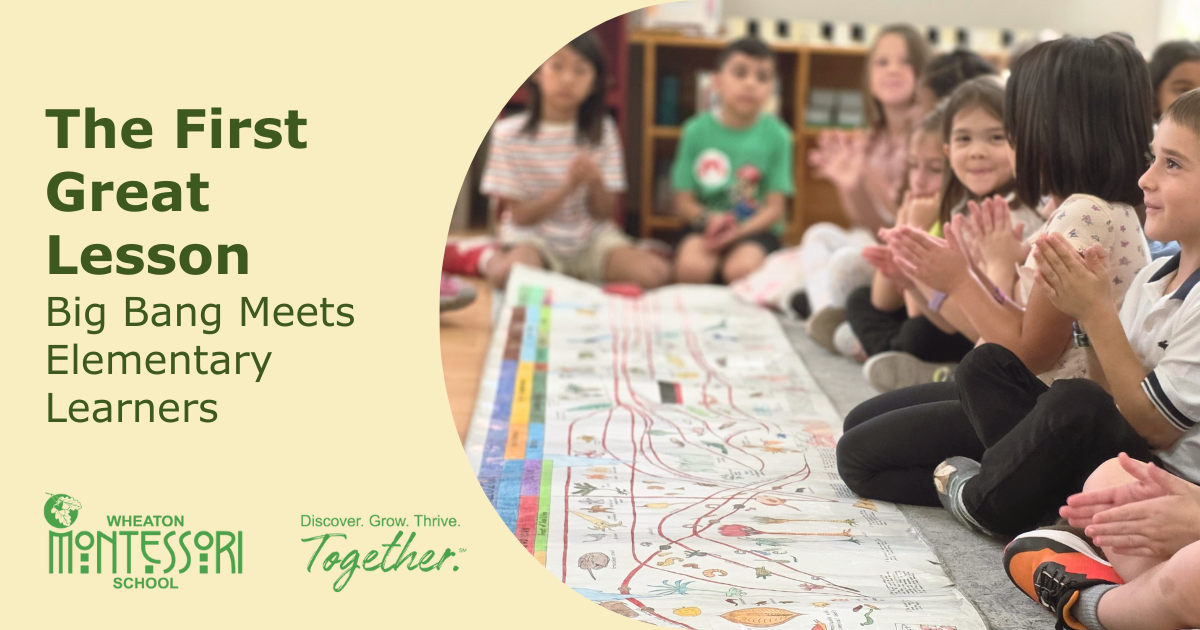
The First Great Lesson: Big Bang Meets Elementary Learners At Wheaton Montessori School, we begin elementary education with a bang. Literally. Known as The First Great Lesson, this powerful introduction to the Montessori elementary curriculum is more than just a lesson. It’s an experience. Often called The Coming of the Universe , it’s a sweeping, story-driven journey through the cosmos. But here’s what makes it unique: it’s not just a science lecture packed with facts and figures. It’s told as a dramatic, awe-inspiring story, beginning with a moment of complete stillness, followed by: “Once upon a time... there was nothing. Then—BOOM—everything.” A Story That Sparks Curiosity The First Great Lesson captures the big picture of how the universe began, moving through the formation of stars, planets, and the laws of nature. But the goal isn't to deliver every scientific detail. It’s our goal to ignite wonder and plant seeds of curiosity that lead students to ask why and how. Why do stars shine? How did volcanoes form? What forces shaped our planet? That spark of curiosity is what drives meaningful learning. Why Tell It as a Story? Dr. Montessori’s use of storytelling is intentional. First through sixth graders are in a stage when their imagination, sense of morality, and desire to understand everything are expanding. The First Great Lesson taps into these characteristics by offering a narrative framework that makes room for wonder. It gives children a reason to care, to question, and to dig deeper. The Gateway to Everything From this one lesson, an entire world of study unfolds. At Wheaton Montessori School, you’ll see students: Exploring states of matter through experiments Creating models of volcanoes and Earth's layers Studying star formation and black holes Building timelines of Earth's history Diving into physics, chemistry, geology, geography, and beyond And it all starts with that initial story. From Inspiration to Investigation of Your Place in the Universe The First Great Lesson doesn’t try to teach everything. It gives an impression, an experience that opens the door to deeper, more focused learning. After listening to this story, learners research, experiment, and explore subjects in greater scientific depth. The First Great Lesson inspires children by conveying: “You are part of a huge, beautiful, ordered universe, and your work is to explore it.” Wheaton Montessori School, your teachers, and your community are here to support you every step of the way! We can’t wait to watch your research, presentations, and experiments develop! Because at Wheaton Montessori School, education isn’t just about information, it’s about inspiration.
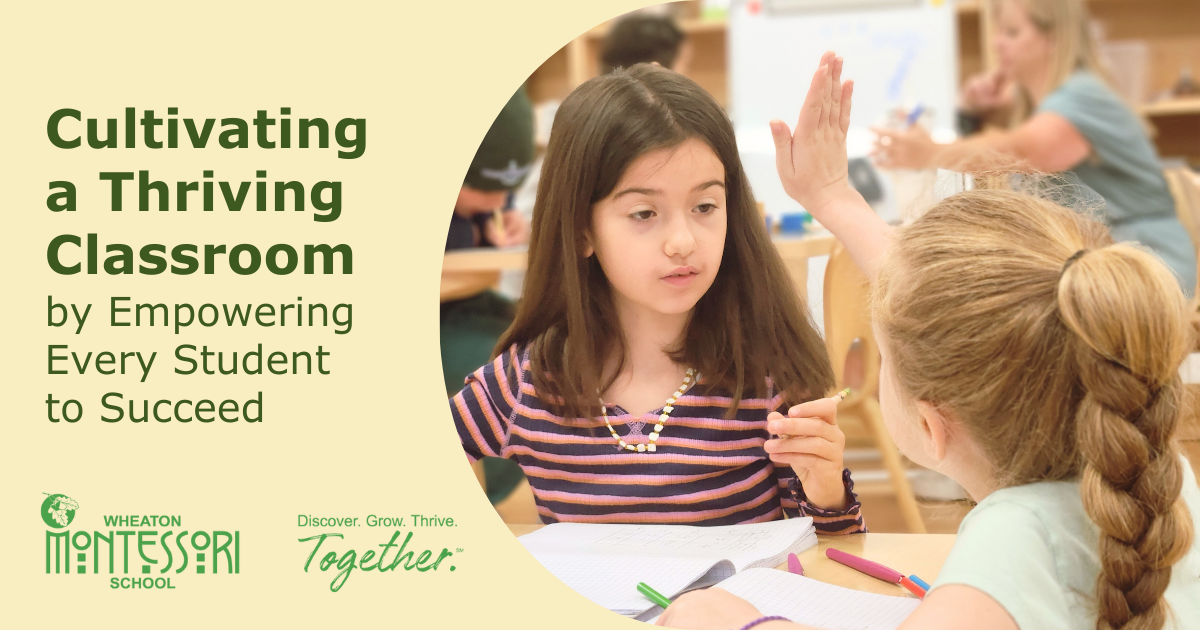
In all thriving Montessori classrooms, students and guides are constantly balancing freedom and responsibility. Students enjoy several freedoms that might be inhibited elsewhere: freedom to move around the classroom, freedom to choose their own work, freedom to socialize, freedom to question, and freedom to learn according to their interests. These freedoms are always balanced against a high level of responsibility: to themselves, to their peers, and to their classroom. Read on to understand how the freedoms and responsibilities are balanced in the Elementary program at Wheaton Montessori School. What Kind of Classroom Do You Want to Have? One of the ways that teachers guide students towards being accountable for their actions and within the classroom is a classroom meeting early in the year, during which the students discuss what "kind of classroom" they want to be a part of - and what rules or expectations will help them achieve their goals. This photograph shows what students in one of our Lower Elementary classrooms (grades 1st-3rd) shared when asked, "What kind of classroom do you want to have?"
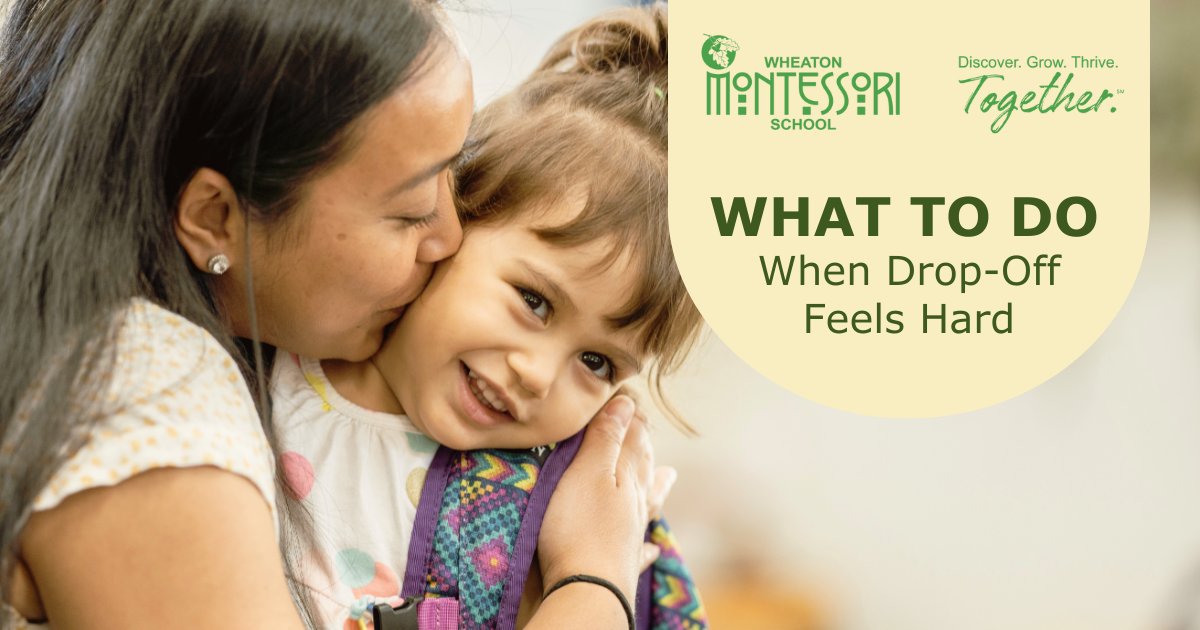
If you’re nervous about drop-off or anxious about creating a smooth transition, I highly recommend Dr. Becky’s advice for a mindset check and for helpful phrases: I f my kids struggle at drop-off, do I linger, or do I sneak out? Neither, those are two extremes. There’s a whole world between lingering and sneaking out. See when you linger, you end up saying to your child that you are anxious about their … What’s in the middle? Validate how they’re feeling. Drop-off feels tricky today? I get it ”Let your kid know you believe in them. I know your gonna’ end up having a good day at school and then leave… Dr. Becky offers a powerful yet simple approach to handling tough goodbyes in a way that honors your child’s emotions and communicates your belief in their ability to handle hard things. Rather than rushing through the discomfort or trying to "fix" their feelings, this approach invites you to feel confident in your own actions— even if your child is falling apart. For Dr. Becky’s entire reel, 👉 Watch it here Why This Works When you acknowledge their feelings without fear, you send a powerful message: “It’s okay to feel this way. I see you. And I believe you can do this.” That combination — emotional validation plus belief in their resilience — is what helps children build true security and confidence from the inside out. Final Thoughts Drop-off doesn’t need to be perfect to be meaningful. There may still be tears—theirs and yours—and that’s okay. What matters most is how you show up in those moments: with confidence, with love, and with trust in your child’s ability to navigate tough feelings. Let this video be your guide the next time you're facing a difficult goodbye. You’ve got this — and so does your child.
